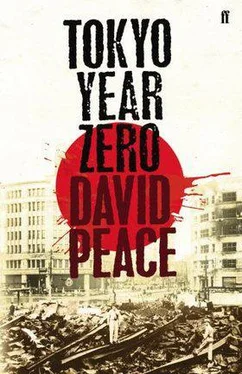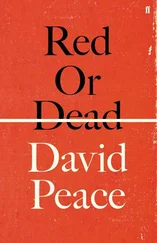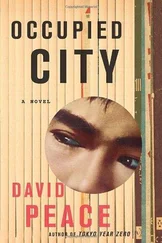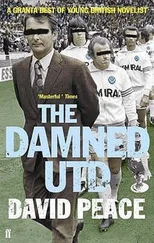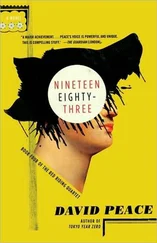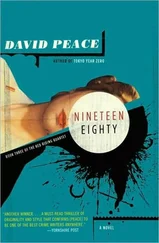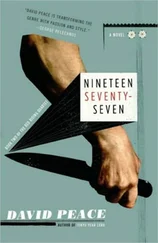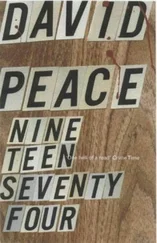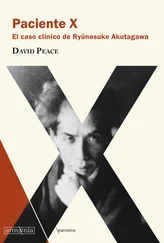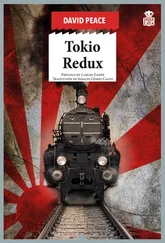I can feel the gun in the small of my back …
‘What is all this?’ he asks now, dropping the pieces of cloth and the fragments of bones onto the floor and standing back up –
Ishida’s gun tucked in my belt …
The other man bending down to look at the cloth and the bones, now staring back up at me with horror in his eyes –
I have no choice now …
I take out my keisatsu techō , my police notebook, and I hand it to them. I tell them, I’m taking this evidence to the autopsy department at Keiō
No choice …
But the two policemen are both smiling at me now, their caps in their hands, wiping their faces and wiping their necks –
‘Why didn’t you just say you were one of us?’
‘I didn’t want to draw attention to myself.’
‘Just show your techō next time …’
‘I am sorry,’ I say. ‘My mistake.’
‘We’re not looking for policemen,’ they laugh as I walk out of the station with the clothes and the bones in the bag on my back.
*
It is still early but the Keiō Hospital is still busy; queues through the gates, queues to the doors, queues in the corridors. I walk through the gates, through the doors and down the corridors; past the queues, past the patients and past the gurneys to the elevator. I push the button –
I hate hospitals. I hate all hospitals. All hospitals …
I step inside. I press another button. The doors close –
I have spent too long in hospitals …
I ride the elevator down in the dark –
I have spent too long here …
The doors open. Light returns –
In the half-light …
I walk past the tiled walls of sinks, of drains, the written warnings of cuts, of punctures, down the corridor to the mortuary and the autopsy room. I knock on the door to the office –
‘Yes,’ shouts Dr. Nakadate from inside –
I open the door. I step into his office –
The smell of death, then disinfectant …
Dr. Nakadate sat at his desk, his face unshaven, his eyes red –
‘What happened to your hair?’ he asks. ‘It’s gone grey.’
‘I almost didn’t recognize you…’
I say, ‘I’ve brought you some souvenirs from Tochigi…’
Dr. Nakadate puts down his pen. He shakes his head –
I put the knapsack down on his desk. I open it up –
I take out the clothes. I take out the bones –
Nakadate looks at them. Then he looks up at me. ‘Kodaira?’
‘Yes,’ I tell him. ‘But I think it’s going to be hard to prove, unless he confesses when faced with the evidence we have…’
Dr. Nakadate asks, ‘Why? Where’s the rest of it?’
‘Utsunomiya,’ I tell him. ‘There are three cases but only one of them was ever treated as a crime. I have asked Utsunomiya to send any remains and any reports they can find here to you.’
‘What are the names of the victims?’ he asks.
‘These bones here were taken from the scene where the body of a woman named Ishikawa Yori was found in September last year. The Kanuma police believe Ishikawa died in June. Then, at a second site, I found these pieces of clothing which I believe belong to a girl called Nakamura Mitsuko, who was reported missing last July. Just last month, Kanuma police found a skeleton which I believe to be hers, though I have not seen the autopsy report. However, I am going to take these pieces of clothing to her family to try to confirm her identity. The third case is that of a young woman named Baba Hiroko who was murdered in January this year…’
Nakadate stops writing. Nakadate nods.
‘You know about that one?’ I ask. ‘Then I can also tell you that we found no evidence to connect Kodaira to a fourth case, that of a Numao Shizue and which had been forwarded to us by Nikkō.’
‘You’ve been very busy, detective,’ says Dr. Nakadate now. ‘Don’t tell me that you’re after a promotion…?’
‘So you heard what happened to me?’
‘Yes,’ says Nakadate.
‘Who told you?’
‘Chief Kita himself,’ he says.
‘When did you see him?’
‘When I took him the Miyazaki Mitsuko autopsy report.’
‘You told me you were going to wait a few days…’
‘I’m very sorry,’ he says. ‘But I had no choice.’
I have no choice. I have no choice …
‘There’s always a choice,’ I hiss –
‘Not this time,’ says Nakadate. ‘The Public Safety Division came here asking to see all reports involving the Kempeitai…’
‘So you gave them the Miyazaki autopsy report?’
‘No,’ he says. ‘I gave it to Chief Kita.’
‘And what did Chief Kita say?’
‘He already knew about it.’
‘But he hadn’t connected it to Kodaira?’
‘I don’t know,’ says Nakadate.
‘Did Chief Kita say what he was going to do about it?’
‘He said they would question Kodaira about it.’
‘What about Chief Inspector Adachi?’
‘What about him?’
‘Did Chief Kita say anything about Chief Inspector Adachi and the Miyazaki case?’
‘No.’
‘Did the Public Safety Division ask you about Adachi?’
‘No.’
‘So what did they ask you about then?’
‘Kempeitai cases,’ he tells me again.
‘About me?’ I ask him –
Nakadate nods –
‘What…?’
‘I’m very sorry,’ he says again. ‘But they have statements. They have witnesses, detective. There was nothing I could do…’
I had no choice. I had no choice. I had no choice …
In the corridor of tiled walls and written warnings, I push the button and I wait for the elevator to come. Dr. Nakadate bows. Nakadate apologizes again. He wishes me luck and then he asks –
Finally he asks, ‘What will you do now?’
‘I have debts to pay,’ I tell him –
‘You owe them nothing…’
‘Not to the living,’ I say. ‘Debts to the dead.’
*
The last streetcar hit a youth and a woman jumped in front of a train so the streetcar is late and the trains have stopped and so I am stood in the queue next to a woman of about fifty in a pair of brown monpe work trousers similar to the rotten pair in the knapsack on my back. I itch and I scratch. Gari-gari . To my left is a youth of about fifteen or sixteen. There is a tear in the shoulder of the coarsely woven factory uniform he is wearing and beneath the visor of his army cap his eyes are closed and his jaw hangs open, his body swaying slowly back and forth in the morning heat, back and forth. I itch and I scratch. Gari-gari . Back and forth, back and forth until, just as it seems he’ll fall forward flat onto his face, the youth pulls himself up –
‘Is he drunk or is he sick?’ asks the woman –
‘Probably just tired and hungry,’ I say.
The woman leans across me. She puts a hand on the youth’s shoulder. She asks him, ‘Are you all right? Where are you going?’
The youth does not answer. The woman asks him again –
This time the youth says, ‘I’m going to Ueno.’
‘Then you’re on the wrong side,’ says the woman. ‘You need to go and wait on the other side of the road for Ueno. Over there…’
The youth stares at the streetcar stop on the other side of the road. But he does not move. Under his cap, he closes his eyes –
‘Over there,’ says the woman again. ‘Can you see?’
Now the youth’s jaw hangs open again.
‘You’re on the wrong side,’ the woman persists –
But still the youth doesn’t open his eyes.
‘This bus won’t take you to Ueno…’
The youth sways back and forth again.
Now she turns to me. ‘He’s going the wrong way.’
Читать дальше
